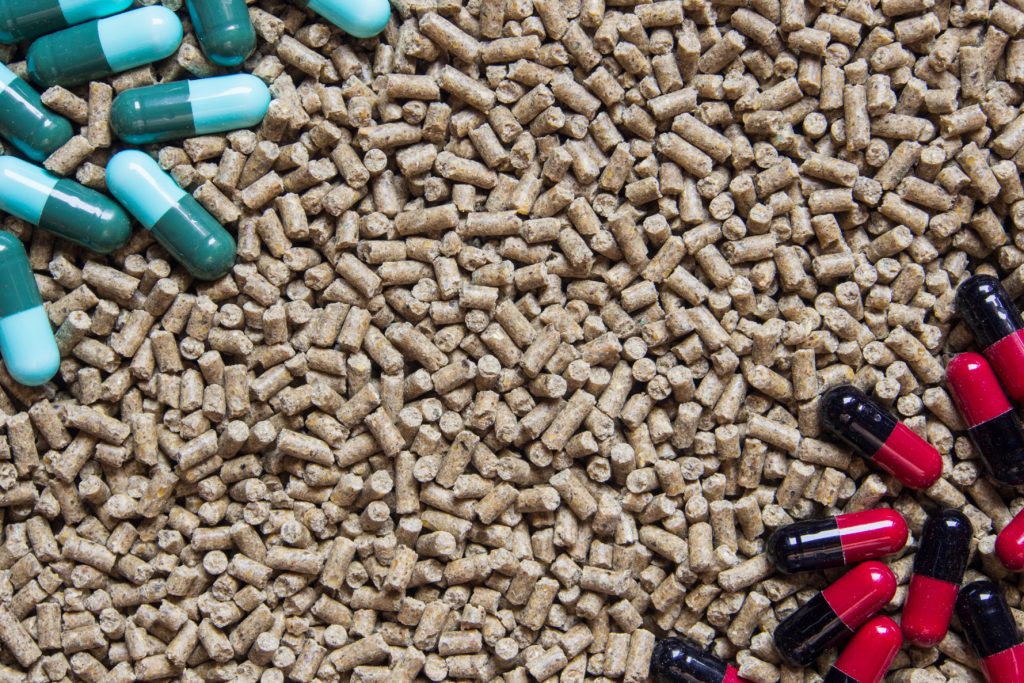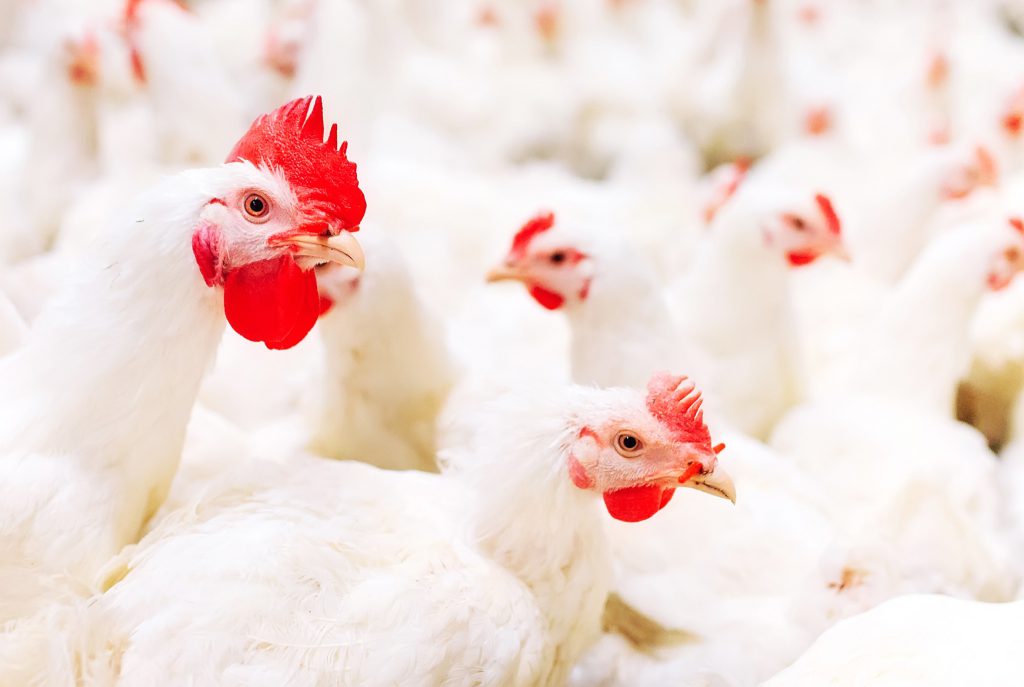Connie: Dear friends, thank you for tuning into today’s program. Tonight, we will be discussing the topic of animal feed supplemented with probiotics. To do that, we are glad to have invited an expert in this field, Dr. Leonard Hofstadter, who has been an editor of scientific journals for a long time. Thank you for joining us today, Dr. Hofstadter.
Dr. Hofstadter: Thank you for inviting me, Connie. Good evening, everyone. I’m very excited to be here.
Connie: It has been estimated that by 2050, the world’s population is expected to increase by more than 9.7 billion, and you can expect, the demand for food will continue to escalate. So it is necessary to strengthen the industrialized animal production system more efficiently. And to achieve this goal, we should adopt appropriate breeding and selection strategies, optimize nutrition, and disease control and prevention so that food production can be maximized. Currently, the European Union and other countries ban and restrict the use of antibiotics in feed due to the possibility of antibiotic resistance to pathogens. After this, finding sustainable production of natural and alternative feed additives has become a top priority for animal nutritionists all over the world. Do you know if there is any progress in the development of new feeds?
Dr. Hofstadter: One of the increasingly important categories is natural microbial feed additives, and you guessed it, “probiotics“. The original concept of probiotics was described as “friendly microorganisms”. Later, the term “probiotics” was coined. It is currently defined as “a rigorously selected live strain of microorganisms that, when given in sufficient amounts, are good for the health of the host”. So probiotics are essentially non-pathogenic, non-toxic microorganisms, and are classified as “generally recognized safe” ingredients by the U.S. Food and Drug Administration.
Connie: There are many beneficial microorganisms in nature, but some criteria need to be met before they can be designated as probiotics. What are the characteristics of probiotics?
Dr. Hofstadter: Depending on the source, probiotics can be either native type, meaning that they are isolated from the host, or off-site type, which means that they are isolated from another host. It can be a single microbial strain or a multi-strain probiotic. In addition, probiotic products can also be a mixture of bacteria, yeast, and fungal microorganisms. It has a proven synergistic effect on the host.
Connie: Can you give us a few examples of microorganisms that have been confirmed to have probiotic activity and their different mechanisms of action?
Dr. Hofstadter: Yeah. There are mainly two types of bacterial probiotics. One is lactic acid users and producers in ruminants; and the other is Saccharomyces cerevisiae, the main yeast found in both ruminants and non-ruminants. But although many yeasts or yeast derivatives have been studied in animal nutrition, only active dry yeast and yeast cultures are usually used in the wild. In addition, few feed ingredients derived from the ethanol industry, including soluble dry distiller grains and wet grains of distiller grains, also contain some yeast cells and related nutrient food compounds. The addition of probiotics will produce a variety of reactions in the animal system. The combination of these responses is beneficial to improving the productivity, health, and welfare of animals.
Connie: Adding probiotics to the diet can maintain or increase the number of beneficial microorganisms, while reducing the number of non-essential and pathogenic microorganisms, such as Escherichia coli, Salmonella, and Clostridium perfringens. What impact do these microorganisms have on the incidence of disease?
Dr. Hofstadter: Oh, important impact, not only cause diseases, they will cause adverse conditions. Including anorexia, necrotizing enteritis, intestinal biological disorders, diarrhea, and immune system regulation disorders. On the contrary, probiotics can help improve animal health by changing the intestinal microflora in a favorable direction, you know, increasing the number of beneficial intestinal microflora.
Connie: Can you be more specific, like using some examples to demonstrate their impact?
Dr. Hofstadter: Sure. For example, the addition of Bacillus subtilis improves the intestinal health of broilers and improves the performance of poultry with necrotizing enteritis. Bacillus subtilis has also been shown to cause a reduction in Salmonella in broilers. Adding probiotic Bacillus subtilis singly or in combination in the diet can uniformly reduce the number of Salmonella Enteritidis in the caecum of laying hens.
Connie: How about the mechanisms of action that lead to growth inhibition and abundance reduction of pathogens in the GI tract?
Dr. Hofstadter: Hmm, I summarized a few mechanisms of action from recent literature. The first one would be the production of bacteriocins and colistin antibacterial compounds or peptides with antibacterial effects. Such as volatile fatty acids, defensins, and virulence gene expression inhibitors. Another MOA is that competitive rejection can block epithelial surface receptors or cause conformational changes in epithelial tight junctions. Thus, various inhibitors compete for intestinal binding sites or enhance pathogens of epithelial barrier function or stimulate mucin synthesis. A physical barrier along the epithelial monolayer can be formed this way. The next MOA is that inhibitors stimulate the immune response by increasing the synthesis of immunoglobulin A and anti-inflammatory cytokines and controlling the production of pro-inflammatory cytokines. And the next one is the expression of virulence genes or proteins of gastrointestinal pathogenic bacteria is down-regulated. Finally, secreting amylase, changing the pH value and microflora of the gi tract, are beneficial to increase the activity of intestinal enzymes and the digestibility of nutrients.
Connie: Wow, that’s quite a lot of MOAs. Which substances produced by gut microbes have inhibitory effects on pathogens?
Dr. Hofstadter: The short-chain fatty acids produced by various intestinal microorganisms, such as lactic acid, acetic acid, propionic acid, and butyric acid, have inhibitory effects on certain pathogens including members of the Enterobacteriaceae family. This inhibitory effect is mainly achieved by lowering the pH value outside and inside the cell.
Connie: Are the types of probiotics important to the health of animals?
Dr. Hofstadter: Certainly. The types and strains of probiotics play an important role in imparting traits that need to be improved. For monogastric animals, the effect of probiotics is more obvious than that of ruminants, and it is easier to observe. The selection of probiotic species is very important. For example, Bacillus is widely used as a direct-feeding microorganism due to its sporulation ability.
Connie: Yeah, that makes sense. How does the bacillus add to the animal private chat play a beneficial role?
Dr. Hofstadter: The antimicrobial peptide produced by Bacillus has a unique bactericidal mechanism. Pathogens are not easy to develop resistance to antimicrobial peptides, so antimicrobial peptides are used as a new type of feed additive. As a probiotic, Bacillus subtilis in the feed can lower the pH of the intestine, enhance the antioxidant status of the intestine, strengthen the intestinal-related immune system, and activate the intestinal intraepithelial lymphocytes. In general, the antibacterial substances produced by Bacillus have the effects of promoting growth, health care, and curing diseases for livestock and poultry. It is an environmentally friendly preparation with no toxic side effects, no residues, and no resistance to bacteria.
Connie: I see. Well, thank you so much for your time today, Dr. Hofstadter. We have reached the end of our program today. Thanks everyone for listening. We will continue our discussion on probiotics at the same time next Saturday. See you then!
Dr. Hofstadter: Thanks, everyone. I hope we will see you next time.
